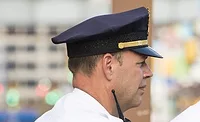Prayer in School

For all of the controversy over whether students should be allowed to or prohibited from praying in school, you may be surprised to learn of the large outbreak of praying and hoping by school boards and college administrators in U.S. schools and colleges that gun violence does not visit their campuses.
Unfortunately, when it comes to security and preventing violence – hope is not the best strategy.
Hope that violence will not occur on their watch, in their classrooms and on their campuses. Hope that they will not have to spend money to create new policies, programs or invest in new technologies or more dreaded “headcount.” Hope that their press conference statements, which include “there was nothing we could have done,” are credible.

Students,
instructors, administrators, parents and the surrounding community all are
stakeholders when it comes to the complexities of protecting colleges and
universities.
How Adequate?
Those in the education market that are not directly impacted send a familiar letter to parents and other stakeholders: “…while the recent events are troubling, we have conducted a thorough review of our safety programs and concluded that they are adequate.” I received two such letters after the Virginia Tech massacre that were remarkably similar and disappointing.We don’t need another academic hoping everything will just be O.K. (we seem to be getting enough of that from Fed Chairman Bernanke). We need ideas that bring people, policies and tools together to limit if not eliminate shootings in schools. One of the best in the business, Maureen Rush, vice president of public safety at the University of Pennsylvania, shared, “Crime is the combination of motive and opportunity. We can’t change motive, so we work to eliminate the opportunity.”

There continues
to be gun violence on campuses. It is a challenge in minimizing opportunities
for such incidents.
Troubling Incidents
Research by Megan Bode, a first-year law student at Wake Forest University in North Carolina, found that during the 33-year period between 1966 and 1999 there were 21 school shootings. There have been 31 school shootings in the past nine years as of 2/25/08.* As motive spirals beyond comprehension and predictability, we need, as an industry, to work harder and smarter to eliminate opportunity.In 2008 we have witnessed nine shootings in or near U.S. educational institutions:**
- Feb. 27: Two students are wounded at the Carver Middle School in Los Angeles.
- Feb. 26: A high school sophomore is wounded outside the Gibson Middle School in Las Vegas.
- Feb. 14: A 27-year-old man goes on a rampage at Northern Illinois University in DeKalb,
shooting 21 people, killing five and later himself. University police report
that the suspect, a former student, had stopped taking medication and had been
acting “somewhat erratic.”
- Feb. 12: In Oxnard, Calif., a 14-year-old shoots a
15-year-old classmate, who later dies of his injuries. The shooting is labeled
a hate crime by the police.
- Feb. 11: In Memphis, a 19-year-old senior is shot in the
school gym by a 17-year-old sophomore, following a feud that started off campus
earlier in the week; after the shooting, the suspect hands his gun to a coach,
saying “It’s over now.”
- Feb. 8: A nursing student shoots two women and then
herself in a classroom at Louisiana Technical College, outside Baton Rouge.
- Feb. 7: In Portsmouth, Ohio, a small community near the Kentucky border, a man
shoots his estranged wife at the Notre Dame Elementary
School.
- Feb. 4: In Memphis’s Hamilton High School, a 16-year-old
student is shot in the leg during an argument with another student over music.
- Jan. 16: As students are being dismissed early from school, one is wounded in the shoulder after being shot in the parking lot of Crossroads Charter High School in Charlotte, N.C.
This significant investment in security implies that indeed, something can be done and worse had something been done proactively, not reactively, perhaps the scope of the tragedy at Virginia Tech and other educational institutions noted above would have been limited. Why invest significantly in security programs after an incident if it will make no difference in the future?
In our April Special Report: Virginia Tech: One Year Later, Bill Zalud documents clear and logical investments in policies, programs and technologies to improve campus security and protect lives. His interviews with leaders show how complex the security assignment is on their micro-communities and how they have made informed changes to their security programs and investments that will reduce risk and improve safety for their stakeholders. Something can and is being done by proactive, conscientious leaders. Our Special Report begins on page ##. And be sure to let us know what you are doing at your organization.
Sources
* The Pittsburgh Tribune-Review 2/28/08 “School Shootings: How Do We Fix It?”
** US News and World Report 2/15/08 “Timeline of School Shootings”
Looking for a reprint of this article?
From high-res PDFs to custom plaques, order your copy today!





